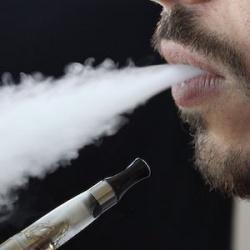
We all know that cigarettes increase the risk of cancer, heart disease, and early death, among other things. While the tobacco smoke of cigarettes contains thousands of chemicals, many of which are known carcinogens, nicotine itself, though highly addictive, is not a carcinogen. Tobacco harm reduction—the policies, programs, and practices that reduce the damage caused by smoking—must consist of viable alternative options to traditional cigarettes.
This strategy focuses on the prevention of harm from cigarette smoking rather than on totally preventing use of tobacco products, and will ultimately save lives.
Yet some anti-smoking groups have switched to being against nicotine too. And why is unclear.
Cigarettes cause the premature death of two out of three smokers, but smokers who quit before the age of 40 avoid 90% of the risk of dying. About 70% of current smokers claims they would like to quit, and every year, 40% make a serious attempt to do so. However, only 5% of smokers are successful. Those numbers are clear—nicotine is highly addictive, and quitting is hard for other reasons also.
Abstinence-only believers, who want regulate electronic cigarettes and vaping devices out of existence (such as by banning flavors), focus on claims of perceived harm of e-cigarettes, rather than on their ability to help people quit what we know is killing them. They argue that e-cigarettes are creating addiction rather than helping current smokers quit. What they, and many studies, fail to accept is how many e-cigarette smokers would have taken up or continued to smoke combustion cigarettes if there wasn’t an electronic alternative. The prevalence of cigarette smoking among adolescents declined from 28% to 7% during 1996 to 2015. Yes, there has been a rise in e-cigarette smoking among youth, but those e-cigarette smokers would have been cigarette smokers in the past.
Some insist that the product design, flavors, and marketing of e-cigarettes has increased the appeal to young people, creating new generations addicted to nicotine. Numerous organizations have recommended flavored electronic cigarettes be prohibited, but there is no reliable data that certain flavors play a role in attracting youth smokers. While no child should use any tobacco product, certain flavors play an important role in helping smokers transition to less harmful forms of nicotine-delivering products. However, as both we and FDA have discussed, in the wild west of vaping, there are bad actors and therefore restrictions and regulations on advertising and promotion of e-cigarette products should be considered. For example, it looks suspicious that tobacco cessation for products with youth-appealing names such as “unicorn vomit”, “fruit loops”, or “peanut butter and jelly”. But for the young people we are told take up these products to seem older and cooler, a product name "peanut butter and jelly" will have the opposite effect.
It's hard to know who they are trying to sell to so it is worthwhile discussing advertising and marketing regulations like are currently imposed on cigarettes, and leaving the flavors alone.
Further research to see if nicotine will be a problem in the United States is needed. In the meantime, it is unconscionable to ignore the fact that many lives could be saved if smokers were to switch to smokeless tobacco alternatives, including e-cigarettes. It should be more important to prevent deaths from smoking than to adhere to some strictly moralistic stances that all tobacco use should be condemned. It is unnecessary for smokers to sacrifice their lives to obtain this nicotine. Smokers smoke for the nicotine, but they die from the smoke.
More reading from Nicotine and Human Health:
Nicotine and Health by American Council on Science and Health on Scribd



